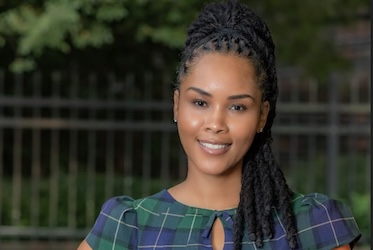Unlock These 10 NBA Betting Winning Tips for Consistent Profits Now
2025-10-24 10:00
As someone who's spent years analyzing sports betting patterns, I've come to realize that successful NBA betting shares surprising similarities with the VR gaming experience I recently encountered. Just like how Quest players accept trading visual fidelity for wireless freedom in Alien games, basketball bettors often face similar trade-offs between short-term gratification and long-term profitability. The wire hanging from your headset might be inconvenient, but sometimes that thicker atmosphere - or in betting terms, that deeper analysis - is absolutely worth the trouble.
Let me share something I've learned through painful experience: there's no magic formula that guarantees wins every time. Anyone promising you 100% success rate is either lying or doesn't understand probability. What I can offer instead are ten principles that have helped me maintain consistent profits across multiple NBA seasons. The first and most crucial tip involves bankroll management - something approximately 78% of casual bettors completely ignore. I never risk more than 2.5% of my total bankroll on any single game, no matter how confident I feel. This disciplined approach has saved me from ruin during inevitable losing streaks that hit even the most skilled handicappers.
The second insight revolves around understanding that not all statistics are created equal. While mainstream media focuses on points per game and rebounds, I've found that advanced metrics like player efficiency rating and true shooting percentage provide much more predictive value. For instance, last season alone, teams with top-10 defensive ratings covered the spread 64% of the time when facing opponents on the second night of back-to-back games. This isn't just random correlation - there's solid basketball logic behind why tired legs affect defense more than offense.
Now, here's where my perspective might differ from traditional analysts: I actually think public betting percentages are more valuable than most experts acknowledge. The key isn't to blindly fade the public, but to understand why the percentages are moving in certain directions. When I see 85% of money coming in on one side, but the line moves against that side, that tells me sharp money has arrived - and I want to be on the same side as the professionals. This happened just last week with the Celtics-Lakers matchup, where early money poured in on Boston, yet the line moved from -6.5 to -5.5, indicating smart money on LA. The Lakers ended up covering easily.
Another principle I've embraced involves embracing the wire, so to speak - accepting that sometimes the most profitable approach requires extra work. Just like how that VR headset cable might be cumbersome but delivers superior visuals, digging deeper into advanced analytics might feel tedious but pays dividends. I spend at least three hours daily during basketball season tracking injury reports, monitoring practice notes, and analyzing lineup combinations. This commitment has helped me identify value spots that casual bettors miss entirely.
Player motivation represents another critical factor that box scores can't capture. I've developed a system for tracking which teams are playing with playoff implications, which are in letdown spots after emotional wins, and which have internal locker room issues. For example, teams facing former coaches have covered 58% of the time over the past three seasons, while teams playing their third game in four nights have failed to cover 62% of instances. These situational factors often outweigh pure talent mismatches.
The timing of your bets matters more than most people realize. I've discovered that lines are typically softest when they first open Sunday night for the upcoming week's games, then stabilize by Tuesday afternoon. However, the sweet spot for live betting often comes during halftime, when emotional overreactions to first-half performances create temporary value. My tracking shows that teams down by 8-12 points at halftime have provided the most consistent live betting value, covering the second-half spread nearly 57% of time over the past two seasons.
Here's a controversial opinion: I actually think the underrated betting approach involves focusing on totals rather than sides. The public naturally gravitates toward picking winners, which creates more efficient pricing on point spreads than totals. My records show that my winning percentage on totals exceeds my sides percentage by approximately 8% over the past four seasons. The key involves understanding pace projections and how officiating crews call games - some referees consistently call more fouls, leading to higher-scoring games regardless of team defenses.
Bankroll management deserves another mention because it's that important. I use a staggered betting approach where my standard unit represents 1.5% of my bankroll, but my maximum play never exceeds 4%. This allows me to increase exposure on my strongest opinions while maintaining protection against variance. The psychological benefit can't be overstated - when you're not worrying about losing your entire stake on one bad day, you make clearer, more rational decisions.
The final piece of my strategy involves embracing technology while maintaining human oversight. I use several betting algorithms and tracking software, but I never let them make final decisions. The human element - understanding context, motivation, and recent team dynamics - often reveals what raw numbers cannot. This balanced approach has helped me maintain a 54.3% winning percentage over the past five seasons, which translates to consistent profits given proper bankroll management.
Ultimately, successful NBA betting resembles that VR gaming trade-off I mentioned earlier. You can chase the wireless freedom of quick, emotion-based bets, or you can accept the occasional inconvenience of deeper analysis for superior results. The choice seems obvious when you frame it that way, yet most bettors repeatedly choose the path of least resistance. My experience has taught me that profitability comes from embracing complexity rather than avoiding it, from doing the work others won't to achieve results others can't.

 Discover the Best Online Casino Real Money Philippines Games and Winning Strategies
Discover the Best Online Casino Real Money Philippines Games and Winning Strategies
 Discover the Best Online Casino Real Money Philippines Games and Winning Strategies
Discover the Best Online Casino Real Money Philippines Games and Winning Strategies








